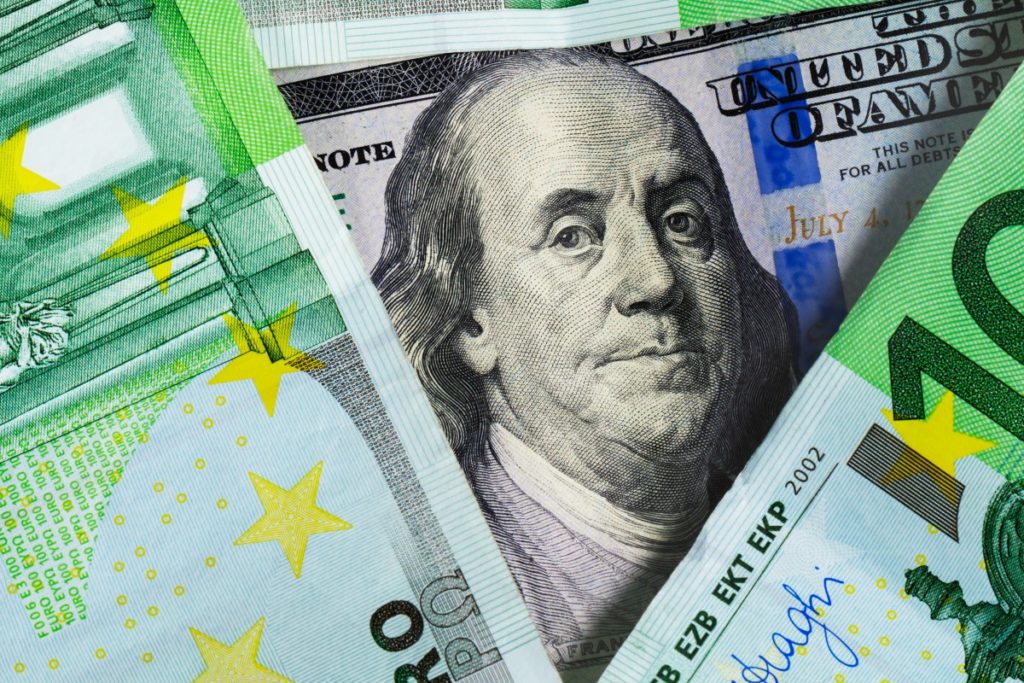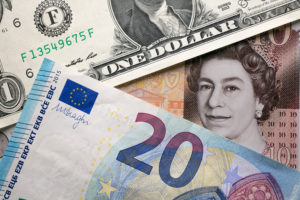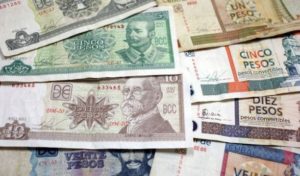 EL GOBIERNO CUBANO SE APOYA NUEVAMENTE EN LOS DOLARES DE LOS EMIGRANTES.
EL GOBIERNO CUBANO SE APOYA NUEVAMENTE EN LOS DOLARES DE LOS EMIGRANTES.
En lugar de potenciar la productividad interna, las autoridades vuelven a la redolarización.
AL IGUAL QUE SUCEDIÓ en 1993 para atajar una de las mayores crisis económicas que se recuerdan en la Isla, la circulación de divisas vuelve a tomar protagonismo, de acuerdo con la última resolución emitida por el Banco Central de Cuba. Las disposiciones permiten a las personas no residentes en el país abrir cuentas bancarias en monedas extranjeras en determinadas entidades nacionales.
Ya en octubre del año pasado el tema de la redolarización de la economía adquirió protagonismo en el debate económico tras la apertura de más de 70 tiendas con productos de mayor variedad y calidad que los ofertados en mercados habituales, pero en este caso con la condición de que se pagara en divisas mediante tarjetas magnéticas.
Son medidas para afrontar la crisis actual y buscar algún alivio rápido a los crecientes desbalances financieros que se vienen acumulando desde 2015″, escribió el economista Pavel Vidal entonces, la “buscada solución” ha sido introducir una tercera moneda.
La posibilidad de que residentes en el extranjero abran cuentas en Cuba es remota, pues los emigrados han sido históricamente perjudicados por el régimen cubano, que los ha despojado de sus derechos dentro del país y no les han brindado ningún tipo de garantías en los últimos 60 años.
EL REGRESO A LOS DOLARES DE LOS EMIGRANTES.
Pero la caída de las remesas por la crisis del coronavirus, la suspensión del turismo internacional, la debacle económica venezolana y las sanciones impuestas por la Administración Trump han puesto al Gobierno cubano en una situación en la que no ha podido disimular sus necesidades económicas, acudiendo entonces a una población a la que ha despreciado históricamente.
Tampoco serán los residentes en la Isla especialmente favorecidos, pues solo una ínfima parte de ellos tiene acceso a las divisas y las monedas nacionales, las que manejan mayormente, se devaluarán cada vez más. Ejemplo de ello es que unos días después del anuncio de la apertura de las tiendas en divisas el pasado octubre el CUC mostró una depreciación en los mercados informales entre un 10% y 20%.
Por otra parte, “un excesivo auge del dólar puede igualmente acabar siendo una pesada losa para el CUP, como ocurrió en los años del ‘Periodo Especial’. El dólar acaba siendo la moneda de los ‘ricos’ y el CUP la moneda de la canasta normada y la libreta de racionamiento”, como explicó Elías Amor en un texto publicado recientemente en DIARIO DE CUBA.
“Tener que devolvernos a los mecanismos monetarios y financieros de los años 90 es un reconocimiento de facto del fracaso de la desdolarización. Que nuevamente se tenga que recurrir a monedas extranjeras para hacer funcionar los mercados domésticos confirma que fracasaron las políticas e instituciones que guiaron el funcionamiento del CUC desde 2004”, expresó Pavel Vidal.
Mientras el Gobierno se mantiene en un vaivén entre las dos crisis, numerosos expertos reclaman medidas que marquen un cambio real en la productividad del país y no se siga dependiendo de las riquezas foráneas.
El economista Omar Everleny, en un texto publicado en Progreso Semanal, afirmó que “una expansión del sector privado doméstico, que desde la apertura de 2010 probó capacidad de crecimiento basada en motores ajenos a la privatización, creciendo de unos 147.000 ‘cuentapropistas’ a más de 620.000 en una etapa pre Covid-19”, podría ser una de las medidas que contribuya a maximizar las utilidades del país.
“Sin una reforma financiera que se haga acompañar de una reforma productiva seria –es decir, que incentive la producción del país por todas las formas productivas (estatales, privadas, cooperativas) aprobadas–, va a ser difícil salir de la crisis por la que Cuba atraviesa”, dijo en otro artículo.
 CUBAN GOVERNMENT GOES AGAIN FOR DOLLARS OF THE EMIGRANTS FOR SUPPORT.
CUBAN GOVERNMENT GOES AGAIN FOR DOLLARS OF THE EMIGRANTS FOR SUPPORT.
Instead of boosting internal productivity, the authorities return to redolarization.
JUST AS IT HAPPENED IN 1993 to tackle one of the greatest economic crises on the island, the circulation of foreign currency is once again taking center stage, according to the latest resolution issued by the Central Bank of Cuba. The provisions allow non-residents of the country to open bank accounts in foreign currencies in certain national entities.
Already in October of last year, the issue of the redolarization of the economy gained prominence in the economic debate after the opening of more than 70 stores with products of greater variety and quality than those offered in regular markets, but in this case with the condition of to be paid in a foreign currency using magnetic cards.
They are measures to face the current crisis and seek some quick relief from the growing financial imbalances that have been accumulating since 2015, “wrote the economist Pavel Vidal at the time. The” sought solution “has been to introduce a third currency.
The possibility that residents abroad can open accounts in Cuba is remote since emigrants have historically been harmed by the Cuban regime, which has stripped them of their rights within the country and has not provided them with any type of guarantees in the last 60 years. years.
THE RETURN TO THE DOLLARS OF THE EMIGRANTS.
But the fall in remittances due to the coronavirus crisis, the suspension of international tourism, the Venezuelan economic debacle and the sanctions imposed by the Trump Administration have put the Cuban Government in a situation in which it has not been able to hide its economic needs, going then a population that has historically despised.
Neither will the residents of the Island be especially favored, since only a very small part of them have access to foreign currencies and national currencies, the ones that they mostly manage, will become increasingly devalued. An example of this is that a few days after the announcement of the opening of foreign currency stores last October, the CUC showed a depreciation in informal markets of between 10% and 20%.
On the other hand, “an excessive boom in the dollar can also end up being a heavy slab for the CUP, as happened in the ‘Special Period’ years. The dollar ends up being the currency of the ‘wealthy’ and the CUP the currency of the standard basket and ration book “, as Elías Amor explained in a text recently published in DIARIO DE CUBA.
“Having to return to the monetary and financial mechanisms of the 90s is a de facto recognition of the failure of de-dollarization. That having to resort to foreign currencies again to make domestic markets work confirms that the policies and institutions that guided the CUC has been operating since 2004, “said Pavel Vidal.
While the government remains in fluctuation between the two crises, numerous experts demand measures that mark a real change in the country’s productivity and do not continue to depend on foreign wealth.
The economist Omar Everleny, in a text published in Progreso Weekly, stated that “an expansion of the domestic private sector, which since the opening of 2010 tested growth capacity based on engines other than privatization, growing from some 147,000 ‘self-employed’ to more 620,000 in a pre-COVID-19 “stage, could be one of the measures that contribute to maximizing the country’s profits.
“Without a financial reform that is accompanied by a serious productive reform -that is, that encourages the country’s production by all the productive forms (state, private, cooperative) approved-, it will be difficult to get out of the crisis for which Cuba is going through, “he said in another article.
Agencies/ DDC/ Opinion/ Extractos/ Excerpts/ Internet Photos/ Arnoldo Varona/ www.TheCubanHistory.com
THE CUBAN HISTORY, HOLLYWOOD.








